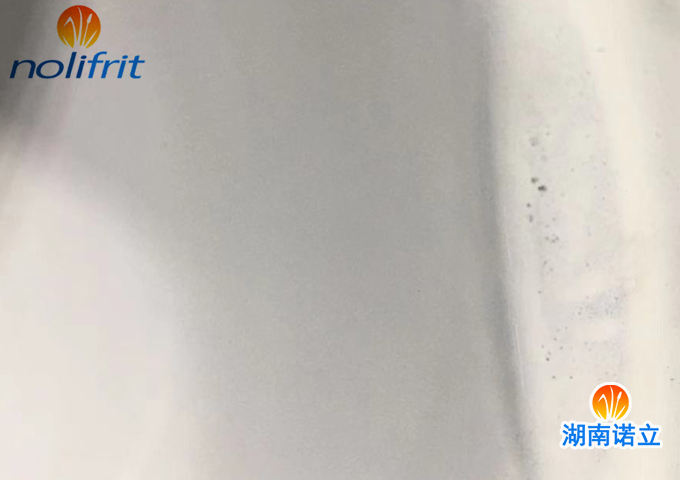Analysis of Various Defects of Enamel Products
There are many reasons for the quality defects of enamel products, and various defects need to be analyzed separately. Today, I will analyze various defects in detail with you. There are common quality defects and uncommon ones, such as bubbles, scorching, peeling off porcelain, copper heads, porcelain layer tearing, silk lines, bubble hairline (chicken feet), boiling, water lines, pinholes and many more. The causes of various defects will be introduced below.

1. Bubbles
The bubbles are air bubbles in the enamel layer after cooling, and the reasons can be attributed to:
①Poor quality of steel plate
②The steel plate has scratches and damages
③Excessive pretreatment pickling
④Improper firing control
⑤The enamel slurry is coated too thickly and cannot be burnt through
⑥There are impurities in the enamel frit
⑦Insufficient firing of the ground coat
⑧Excessive water vapor in the kiln causes hydrogen pollution
2. Scorched
①The primer is not evenly coated
②The ground coat is too soft and there is too little quartz
③The firing temperature is too high or the time is too long
3. Remove the piece and remove the porcelain
The flaking is that when the enamel is cooled or after cooling, the enamel cracks and peels off. Stripping often penetrates the entire enamel layer and reaches the steel surface.
If there is no problem with the quality of the steel itself, most of the stripping is caused by too thick enamel coating, external mechanical stress, or the surface of the steel plate is not clean. If the expansion coefficient of the enamel is too low, pressure during cooling will also deepen the peeling.
Some of the steel plates are improperly stamped and processed, resulting in micro-cavities on the surface of the steel plates, and the enamel cracks and peels off after 3 to 5 days after applying the enamel.
4. Copper head (copper spot)
The copper head is the reddish-brown spots on the ground coat, which is caused by the oxidation of iron in the enamel slurry.
①The pretreatment of steel plate is not cleaned up
②Excessive pickling
③Excessive neutralizer
④ Pollution of enamel and enamel slurry
⑤The ground coat is too thin
⑥Drying is too slow
⑦The ground coat contains iron
⑧It rusts after being placed for too long before glazing
⑨Incorrect melting degree
⑩Use inappropriate steel plate
5. Tearing and bursting
The enamel layer is cracked (slightly) in the form of a network, often penetrating the entire enamel layer.
①The viscosity of the enamel slurry is too small
② Poor drying prematurely or overheating
③Undried firing
④Insufficient drying strength
⑤Apply enamel on contaminated products
⑥The enamel slurry is applied too thickly
⑦The green body moves when drying, and the part is bent during firing
⑧Apply with low specific gravity enamel slurry
⑨Use aged enamel slurry and frit to dissolve it into alkaline.